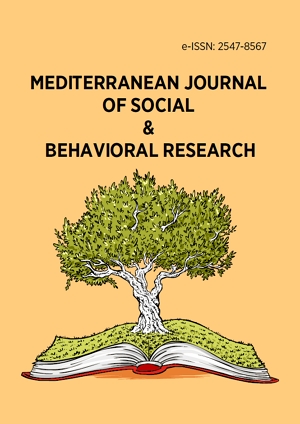Keyword: communication
8 articles found.
Research Article
Crisis risk communication and public behavior: Analysis of the COVID-19 pandemic in Pakistan
MEDITERR J SOC BEH RES, Volume 8, Issue 2, June 2024, 43-53
https://doi.org/10.30935/mjosbr/14435Research Article
A Discourse on the Effectivenes of Health Communication on COVID-19 Infodemic and Conspiracy Theory in Nigeria
MEDITERR J SOC BEH RES, Volume 6, Issue 3, October 2022, 93-100
https://doi.org/10.30935/mjosbr/12331Research Article
Communications Approach and Perceptual Response in Health Information
MEDITERR J SOC BEH RES, Volume 6, Issue 2, June 2022, 45-52
https://doi.org/10.30935/mjosbr/11821Research Article
Effect of Tutorial on Students’ Communication Skill in Google Classroom in University of Port Harcourt
MEDITERR J SOC BEH RES, Volume 5, Issue 3, October 2021, 51-57
https://doi.org/10.30935/mjosbr/11292Research Article
The Importance of Empathic Listening Skills in Turkish Learning of Foreign Students
MEDITERR J SOC BEH RES, Volume 5, Issue 2, June 2021, 35-40
https://doi.org/10.30935/mjosbr/10917Research Article
Communication Barriers and Process of Feedback in Social Interactions
MEDITERR J SOC BEH RES, Volume 5, Issue 1, February 2021, 3-12
https://doi.org/10.30935/mjosbr/10804Research Article
Development of Preschool Children’s Communication Skills Assessment Scale - Educator Form
MEDITERR J SOC BEH RES, Volume 3, Issue 3, October 2019, 37-42
https://doi.org/10.30935/mjosbr/9592Research Article
Scenarios of Multimedia Presentation of Material Cultural Heritage
MEDITERR J SOC BEH RES, Volume 2, Issue 2-3, December 2018, 19-22
https://doi.org/10.30935/mjosbr/8383
